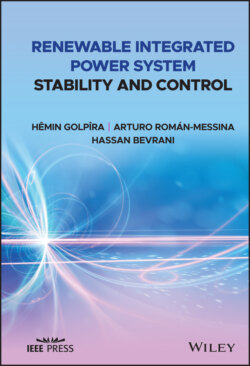Читать книгу Renewable Integrated Power System Stability and Control - Hassan Bevrani - Страница 15
1 Introduction
ОглавлениеThe term power system stability and control is used to define the application of control theorems and relevant technologies to analyze and enhance the power system functions during normal and abnormal operations. Power system stability and control refers to keep desired performance and stabilizing power system following various disturbances, such as short circuits, loss of generation, and load.
The capacity of installed inverter‐based distributed generators (DGs) and renewable energy sources (RESs) individually or through the microgrids (MGs) in power systems is rapidly growing, and a high penetration level is targeted for the next few decades. In most countries including developing countries, significant targets are considered for using the distributed microsources and MGs in their power systems for near future. The increase of DGs/RESs in power systems has a significant impact on CO2 reduction; however, recent studies have shown that relatively high DGs/RESs integration will have some negative impacts on power system dynamics, frequency and voltage regulation, as well as other control and operational issues. Decreasing system inertia and highly variable dynamic nature of DGs/RESs/MGs are known as the main reasons. These impacts may increase for the dynamically weak power systems at the penetration rates that are expected over the next several years.
In this chapter, a brief discussion on the power system stability and control in modern renewable integrated power systems and the current state of this topic are given. Data‐driven wide‐area power system monitoring and control is emphasized, and the significance of measurement‐based dynamic modeling and parameter estimation is shown.
